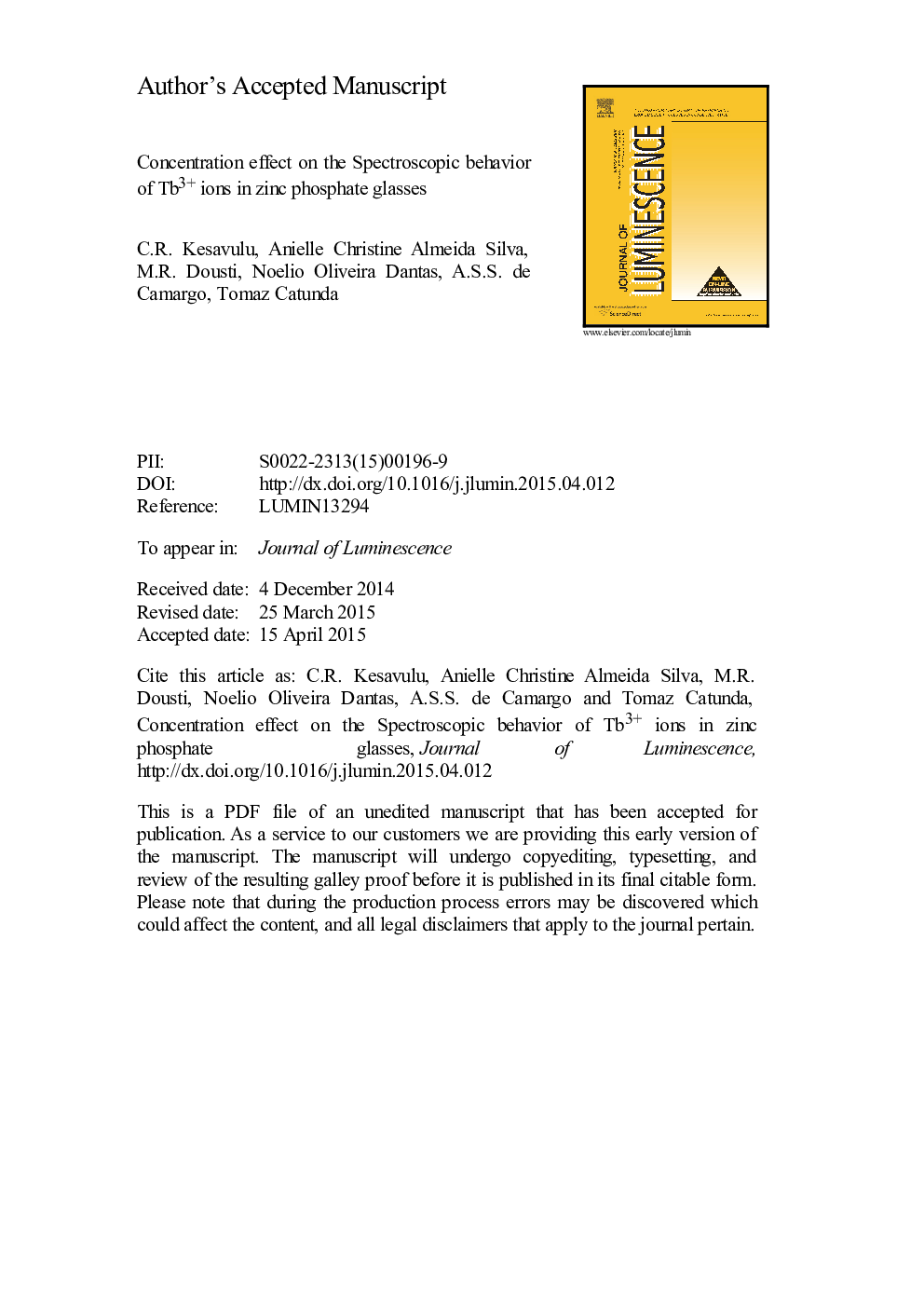| Article ID | Journal | Published Year | Pages | File Type |
|---|---|---|---|---|
| 5398855 | Journal of Luminescence | 2015 | 33 Pages |
Abstract
Zinc phosphate glasses (PZABPTb) in the compositional system: P2O5-ZnO-Al2O3-BaO-PbO doped with variable Tb3+ concentrations (1-5Â wt% Tb2O3) were prepared and characterized through absorption, excitation, emission and intensity decay rate measurements. The Judd-Ofelt model has been adopted to evaluate the radiative properties of the 5D4â7F6-3 emission transitions. The effect of Tb3+ ion concentration on the emissions from the 5D3,4 excited levels is discussed in detail. Analysis of the intensity decay curves corresponding to blue and green emissions from levels 5D3 and 5D4, respectively, allowed determination of effective lifetimes, which confirmed the Tb3+ ion concentration quenching of the blue emission in these glasses. The decay curves for the 5D3 level are found to be non-exponential in nature for all the studied concentrations due to ion-ion energy transfer through cross-relaxation. In an attempt to identify the origin of the energy transfer mechanism, the decay curves were well fitted to the Inokuti-Hirayama model for S=6, which indicates that the energy transfer process is of dipole-dipole type. The optical band gap energy (Eopt) has been evaluated taking into account the ultraviolet edge of absorption spectra.
Related Topics
Physical Sciences and Engineering
Chemistry
Physical and Theoretical Chemistry
Authors
C.R. Kesavulu, Anielle Christine Almeida Silva, M.R. Dousti, Noelio Oliveira Dantas, A.S.S. de Camargo, Tomaz Catunda,
